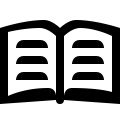عنوان
پدید آورنده
موضوع
رده
QA76.73.J38 N355 2003eb
QA76
.
73
.
J38
N355
2003eb
کتابخانه
محل استقرار
INTERNATIONAL STANDARD BOOK NUMBER
(Number (ISBN
0511039603
(Number (ISBN
0511053193
(Number (ISBN
0511177070
(Number (ISBN
0511202385
(Number (ISBN
0511304803
(Number (ISBN
051154703X
(Number (ISBN
0521520592
(Number (ISBN
1107112702
(Number (ISBN
1280416920
(Number (ISBN
6610416923
(Number (ISBN
9780511039607
(Number (ISBN
9780511053191
(Number (ISBN
9780511177071
(Number (ISBN
9780511202384
(Number (ISBN
9780511304804
(Number (ISBN
9780511547034
(Number (ISBN
9780511547034
(Number (ISBN
9780521520591
(Number (ISBN
9781107112704
(Number (ISBN
9781280416927
(Number (ISBN
9786610416929
Erroneous ISBN
0511037953
Erroneous ISBN
0521520592
NATIONAL BIBLIOGRAPHY NUMBER
Number
b714858
TITLE AND STATEMENT OF RESPONSIBILITY
Title Proper
Java frameworks and components :
General Material Designation
[Book]
Other Title Information
accelerate your Web application development /
First Statement of Responsibility
Michael Nash.
.PUBLICATION, DISTRIBUTION, ETC
Place of Publication, Distribution, etc.
New York :
Name of Publisher, Distributor, etc.
Cambridge University Press,
Date of Publication, Distribution, etc.
2003.
PHYSICAL DESCRIPTION
Specific Material Designation and Extent of Item
1 online resource (x, 477 pages) :
Other Physical Details
illustrations
INTERNAL BIBLIOGRAPHIES/INDEXES NOTE
Text of Note
Includes bibliographical references and index.
CONTENTS NOTE
Text of Note
Cover -- Half-title -- Title -- Copyright -- Dedication -- About the Author -- Contents -- Acknowledgments -- CHAPTER 1 Components and Application Frameworks -- 1.1 INTRODUCTION -- 1.2 WHAT ARE THEY? -- 1.2.1 Web Applications -- 1.2.2 Components -- 1.2.2.1 Separation of Interface and Implementation -- 1.2.2.2 Inversion of Control -- Don't call us, We'll call you -- 1.2.2.3 Component Execution Environment -- 1.2.2.4 Components and Objects -- 1.2.2.5 Component-based Development -- 1.2.2.5.1 Types of Components -- 1.2.2.6 JavaBeans -- 1.2.3 Application Frameworks -- 1.2.3.1 What Do They Do?
Text of Note
1.2.3.2 Application Framework Characteristics -- 1.2.3.3 Who Needs Them -- 1.2.3.4 What Are they not? -- 1.2.3.5 Frameworks and J2EE -- 1.2.3.6 Frameworks and Enterprise JavaBeans: To EJB or Not to EJB -- 1.2.3.7 Adopting Frameworks -- 1.2.3.8 Good Tools in Bad Times -- 1.2.3.9 Reinventing the Wheel -- 1.2.4 APIs -- 1.2.5 Application Servers: The Web-Application Execution Environment -- CHAPTER 2 Components: The Future of Web-Application Development -- 2.1 WHY ARE COMPONENTS THE FUTURE OF WEB-APPLICATION DEVELOPMENT? -- 2.1.1 Where We Are Today -- 2.1.2 The Market -- 2.1.3 Why Projects Fail.
Text of Note
2.2 A BRIEF HISTORY OF COMPONENTS -- 2.3 ADVANTAGES OF COMPONENTS AND FRAMEWORKS -- 2.3.1 Time to Market -- 2.3.2 Quality -- 2.3.3 Cost -- 2.3.4 Adaptability -- Change by Reconfiguring, Not Rewriting -- 2.3.5 Scalability -- 2.3.6 Integration -- 2.4 BEYOND E-COMMERCE: COMPONENTS AT WORK -- 2.5 CONCLUSION: THE FUTURE IS JUST BEGINNING -- CHAPTER 3 Application Frameworks: What Do They Provide and What Are the Benefits? -- 3.1 ADVANTAGES OF FRAMEWORKS -- 3.1.1 Structure -- 3.1.2 Services -- 3.1.3 Completeness -- 3.2 WHAT IS IN THE TOOL BOX? (COMMON ELEMENTS IN WEB-APPLICATION DEVELOPMENT)
Text of Note
3.2.1 Application Logic -- 3.2.2 Database Access -- 3.2.2.1 Java Data Objects (JDO) -- 3.2.3 Database Maintenance -- 3.2.4 Logging -- 3.2.5 Event Handling -- 3.2.6 Caching -- 3.2.7 Configuration -- 3.2.8 Scheduling -- 3.2.9 Messaging -- 3.2.10 Error Handling -- 3.2.11 Monitoring and Testing -- 3.2.11.1 Performance -- 3.2.12 Security -- 3.2.12.1 System Security -- 3.2.12.2 Authentication and Authorization -- 3.2.12.2.1 JAAS -- 3.2.12.3 Data Security -- 3.2.12.3.1 Methods of Attack on a Web Application -- 3.2.12.3.2 Auditability -- 3.2.13 Presentation and User Interface.
Text of Note
3.2.13.1 Internationalization -- 3.2.13.2 Web UI options -- 3.2.13.2.1 Applets -- 3.2.13.2.2 JSP -- 3.2.13.2.3 XML/XSL -- 3.2.13.2.4 Flash and Other Options -- 3.2.13.2.5 Supporting Flexible UIs -- 3.2.13.3 Portal -- 3.2.13.4 Web Services -- 3.2.14 Legacy Application Integration -- 3.2.15 Utilities -- 3.2.16 Others -- 3.2.17 Summary -- CHAPTER 4 Choosing an Application Framework -- 4.1 OVERVIEW -- 4.1.1 Identification -- 4.1.2 License -- 4.1.3 Complexity -- 4.2 WHAT TO LOOK FOR -- 4.2.1 Design Patterns -- 4.2.2 Examples -- 4.2.3 Documentation -- 4.2.4 Support -- 4.2.5 Standards Compliance.
0
8
8
8
8
SUMMARY OR ABSTRACT
Text of Note
This book is a practical tool for Java programmers. It provides the necessary information for them to be able to find, evaluate and select an application framework suitable to their needs. It explains in plain language the benefits of frameworks and component technologies, specifically in relation to web application development. The book is unique in that it does not focus on any specific technology, yet at the same time uses examples from several different frameworks to explain the underlying principals. This gives it a broad appeal to developers that are not sure which framework is right for their purpose, while at the same time making it a practical tool. Application frameworks are large often very complex tools that many developers do not yet fully understand. This means they cannot take advantage of the substantial benefits such a technology can bring to their development project - they often are re-inventing the wheel repeatedly. As the market for web applications begins its second wave, this book provides the critical information for developers to make the transition into componentized framework-based development, keeping them ahead in an increasingly competitive market. An emphasis on quality and globalization is maintained throughout, as these factors become essential in new projects.
OTHER EDITION IN ANOTHER MEDIUM
Title
Java frameworks and components.
International Standard Book Number
0521520592
TOPICAL NAME USED AS SUBJECT
Application software-- Development.
Java (Computer program language)
Anwendungssoftware
Application software-- Development.
Computer Science.
COMPUTERS-- Programming Languages-- C♯
COMPUTERS-- Programming Languages-- Java.
COMPUTERS-- Programming Languages-- Pascal.
Engineering & Applied Sciences.
Java
Java (Computer program language)
Softwareentwicklung
(SUBJECT CATEGORY (Provisional
COM-- 051130
COM-- 051280
COM-- 051310
DEWEY DECIMAL CLASSIFICATION
Number
005
.
13/3
Edition
22
LIBRARY OF CONGRESS CLASSIFICATION
Class number
QA76
.
73
.
J38
Book number
N355
2003eb
PERSONAL NAME - PRIMARY RESPONSIBILITY
Nash, Michael,1964-
ORIGINATING SOURCE
Date of Transaction
20201208050754.0
Cataloguing Rules (Descriptive Conventions))
pn
ELECTRONIC LOCATION AND ACCESS
Electronic name
 مطالعه متن کتاب
مطالعه متن کتاب [Book]
Y

